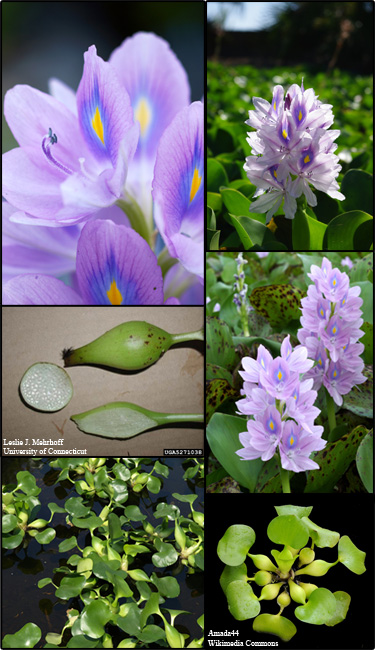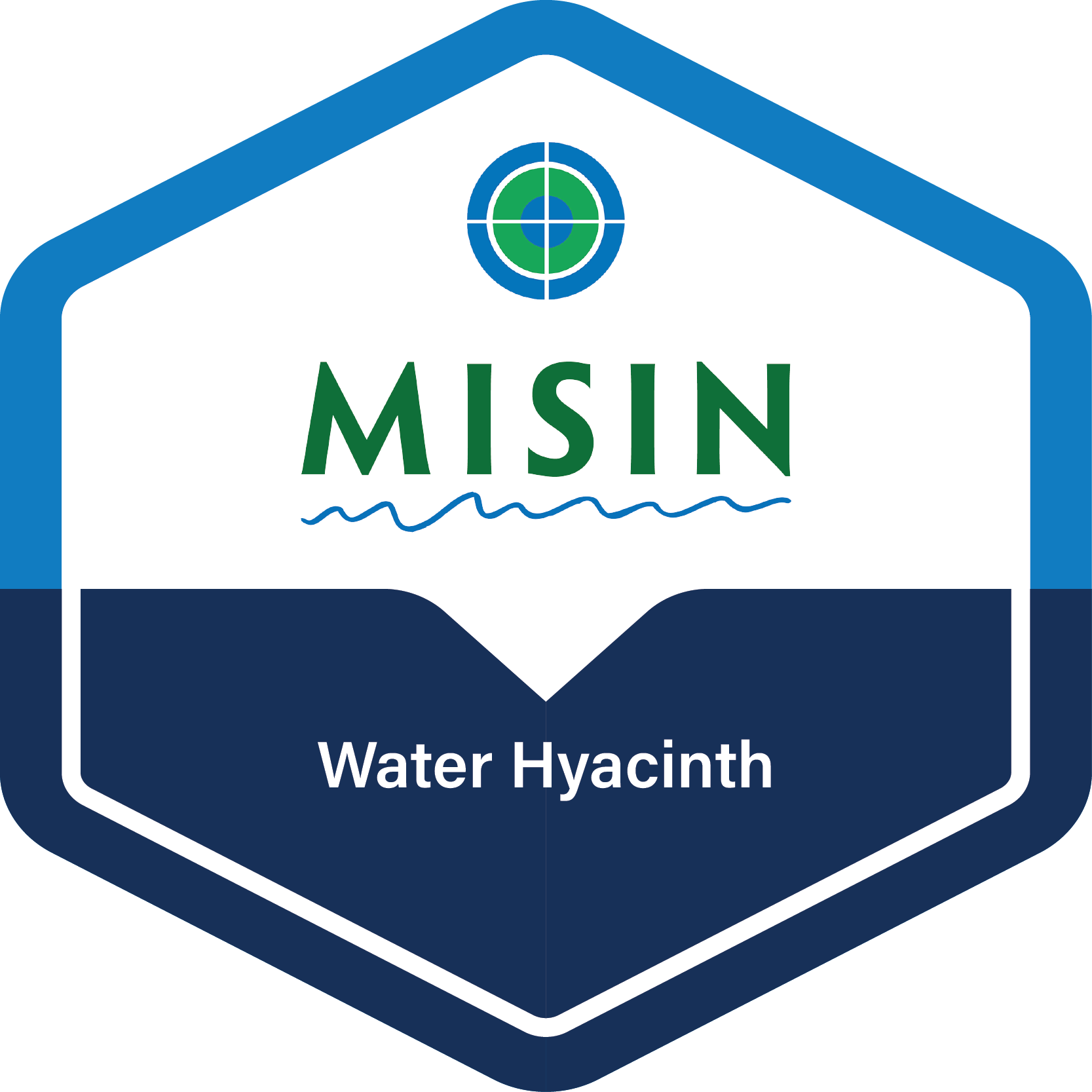Water hyacinth (Eichhornia crassipes)
 Synonyms: Eichhornia speciosa, Piaropus crassipes
Synonyms: Eichhornia speciosa, Piaropus crassipesCommon Names: Common water hyacinth
Description: In its southern range, it doubles in size in two weeks. Considered to the be one of the most troublesome aquatic weeds in the world; seems persistent in the lower Detroit River/western Lake Erie, unclear if it is dying off in mild winters.
Habit: Free floating aquatic plant; 0.5-1 m (1.5-3 ft) tall; distinctive air bladders that keep leaves afloat; forms dense, floating mats.
Leaves: Thick, waxy, round, broad, 10-20 cm (4-8 in) in diameter, cuplike, glossy, green in color.
Stems: Spongy; erect; stems up to 50 cm (20 in) long; inflated with air bladders towards the base.
Flowers: Showy, lavender-blue in color, 6 petals, upper petals with a central, yellow blotch; 8-15 flowers occur on a single spike that can be up to 30 cm (1 ft) long; bloom mid-summer.
Fruit and seeds: Seed pod, 3 celled, many tiny seeds.
Habitat: Native to the Amazon Basin. Found primarily in southern and western wetlands, marshes, ponds, lakes, and rivers.
Reproduction: By fragmentation of stolons, adventitious root system, and to a lesser extent by seed.
Similar species: Pickerelweed (Pontederia cordata) has purple flower spikes, lacks the conspicuous air bladder; not mat-forming.
Monitoring and rapid response: Monitor ditches, ponds, wetlands, lakes and rivers along the lower Detroit River for this species. Most recognizable in bloom (late summer, early fall). Hand pull small populations; several herbicides are effective. Permits are usually required for herbicide use in water bodies and wetlands. For information see MDEQs Aquatic Nuisance Control website at: https://www.michigan.gov/egle/0,9429,7-135-3313_3681_3710---,00.html. As this species is not widely distributed in Michigan, it is important to document new occurrences. Please obtain flowering or fruiting specimens and submit to: Anton Reznicek, Curator (Vascular Plants), University of Michigan Herbarium, 3600 Varsity Drive, Ann Arbor, MI 48108-2287. Credits: The Michigan Natural Features Inventory (MNFI) has partnered with MISIN to provide the information in this fact sheet. Species images and/or information were used with permission from "A Field Identification Guide to Invasive Plants in Michigan's Natural Communities" and "A Field Guide to Invasive Plants of Aquatic and Wetland Habitats for Michigan.
STATUS | Priority Species |
Common Name: | Water hyacinth |
Scientific Name: | Eichhornia crassipes |
Family: | Pontederiaceae (Water hyacinth) |
Duration: | Perennial |
Habit: | Aquatics |
USDA Symbol: | EICR |
 View Species Course |
|
